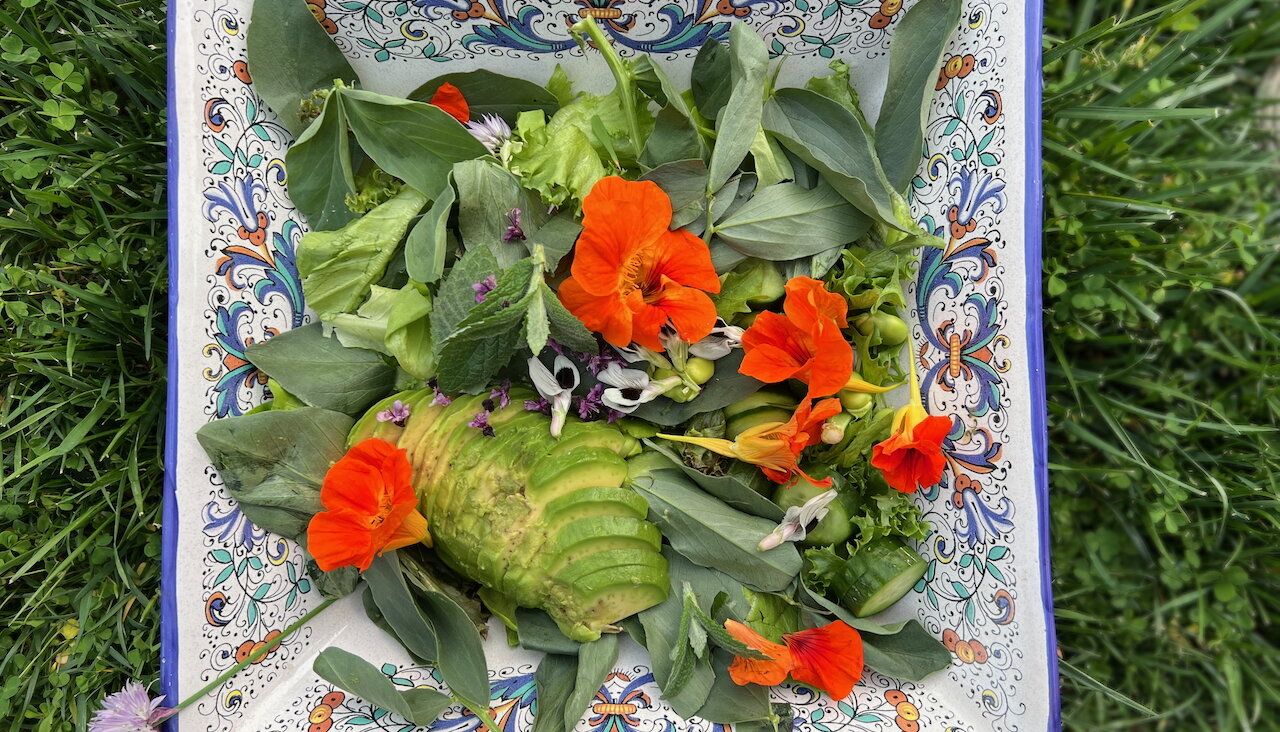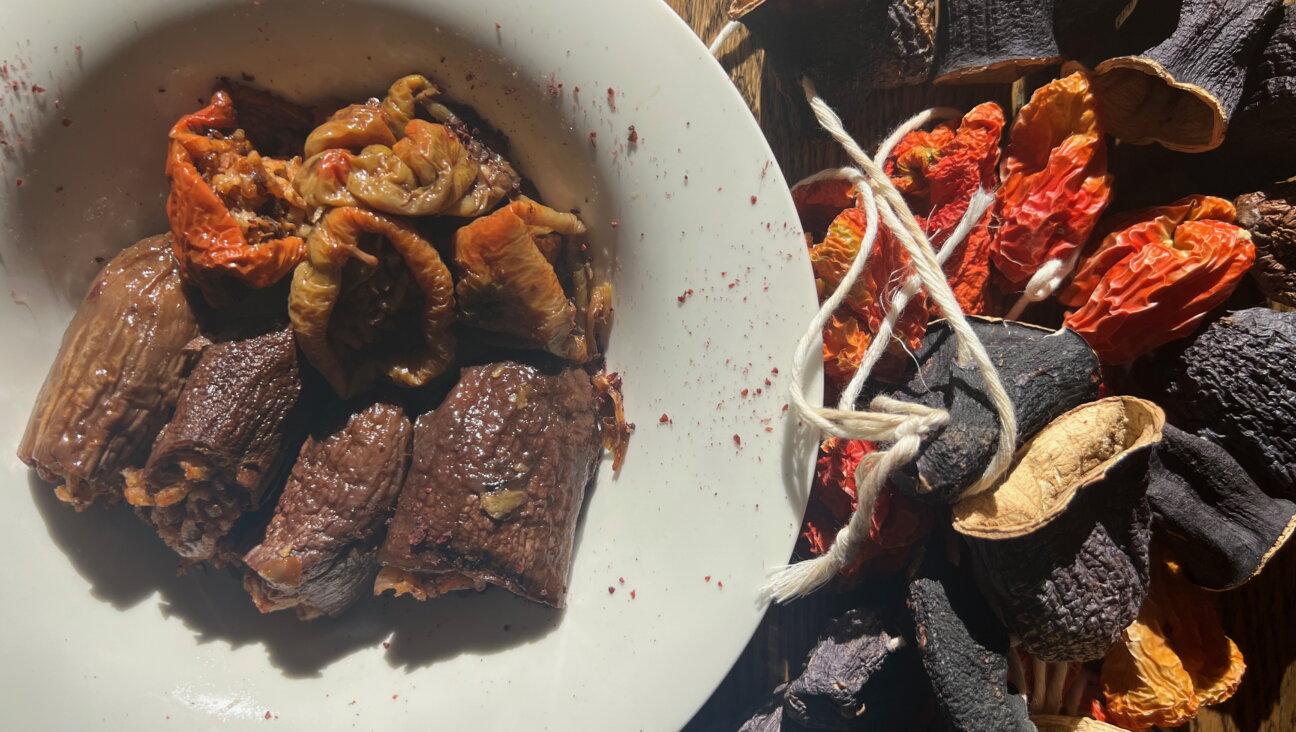Preservating the Season’s Bounty During Sukkot

Image by Megan Jensen
Sukkot is the holiday that celebrates the autumn harvest. The last of the three annual pilgrimage festivals on the Jewish calendar (if we’re counting from Pesach), these were the days in ancient times when our ancestors would gather the best of their seasonal produce and travel to the Temple in Jerusalem to give thanks as a community. In modern times, the communal table often takes the place of the Temple, bringing people together to give thanks for the abundance of the harvest. At the Isabella Freedman Jewish Retreat Center’s Sukkahfest more than a hundred people from all denominations of Judaism come together to celebrate and give thanks for the fruits of the season. Participants are able to see firsthand the source of their sustenance, with opportunities to visit our farm, orchard, and barnyard. Another way to show gratitude for the abundance of the harvest, and to continue to feed oneself with locally grown produce through the colder months, is preservation.
At Isabella Freedman we make every effort to utilize our farm’s produce when it is a fresh as possible — when it tastes the best and has the most nutritional value. Much of the produce grown on the Adamah farm is made into live cultured, lacto fermented pickled products. After the first frost in the fall, cabbages are harvested, chopped, salted, and made into sauerkraut. Scallions, daikon radishes, carrots, Napa cabbage, and hot peppers are mixed together to create our spicy kim chi. The last of the season’s hot peppers are mixed with sugar and cooked down to produce Bomb Jelly. After the jelly is finished cooking, it is poured into sterilized jars and canned, making a shelf stable product that can be stored anywhere in the kitchen. Lacto fermentation and canning are two time-tested preservation methods. One can imagine our ancestors marveling at their harvest of cucumbers, cabbages, or beets and covering the abundance in a brine of salted water to keep for the coming seasons.
This year, Isabella Freedman heightened its commitment to providing seasonal, local foods in our dining hall with the addition of a Farm to Table Coordinator, Arthur Schwab. Although our fields were affected by recent flooding and there is less produce to preserve than in previous years, Arthur and I brainstormed preservation projects that are perfect for celebrating the abundant seasonal harvest in one’s own kitchen.
Freezing:
Freezing is an easy and fast way to preserve, and works great if you have room in your freezer.
–Tomatoes can be frozen whole on a sheet pan (with enough space between them so they’re not touching), then bagged and used later in soups and stews.**
– Greens such as kale and collards can be blanched in boiling water for a minute and then frozen.
– Herbs can be chopped up and frozen in ice cube trays with a bit of water (to make them easier to remove). There is nothing better than having fresh herbs in the winter!
– The last of summer’s sweet corn is still available. Cut the corn off the cob, spread on a sheet pan and freeze, then bag.
– Salsa can be made with the last of the tomatoes and hot and sweet peppers. If you’re short on freezer space, can the salsa; but if not, it freezes well.
– Winter squash can be frozen in chunks raw after being peeled and de-seeded.
Drying:
For those without copious amounts of freezer space or the desire to can, drying is a great option. If you don’t have a dehydrator, you can use a regular oven on the lowest possible temperature.
– Harvest the last of the season’s herbs before the plants begin to flower. After giving them a wash, spread them out and let them dry completely. After the herbs are completely dry (wet herbs will mold)) bunch and hang upside down in a paper bag. Herbs dry best in a space that is fairly warm and has good air circulation.
– Fruit is also a great candidate for drying. Slice the fruit thinly (the thinner the fruit the faster it will dry) and place in a dehydrator or oven on a low temperature. Once dry store in an air tight container.
– Vegetables such as peppers and cherry tomatoes are delicious when dehydrated, as the drying concentrates their flavor and brings out their sweetness. After drying the vegetables pack them in good quality olive oil, making sure all the vegetables are covered in oil, and store in the refrigerator. The oil makes a great base for salad dressings.
Root vegetables:
Root crops are made for storage! If your CSA has been giving you large amounts of carrots, beets, and potatoes every week, you can store the extras for eating later. Root crops do best in cool environments, just above freezing, and should stay at a consistent temperature. If the temperature varies even a bit, it will signal to the vegetables that it’s time to wake up and sprout. If you don’t have a cellar, you can store your veggies in a wooden or cardboard box with layers of insulating material such as sawdust, sand, or even newspaper. Make sure that there is insulating material on the top, bottom, and sides of the container, and spread layers in between vegetables.
Enjoy the harvest!
Megan Jensen is the Development Associate at the Isabella Freedman Jewish Retreat Center. Her autumn projects include making quince jam, apple butter, ricotta cheese and pumpkin ice cream.
The Forward is free to read, but it isn’t free to produce

I hope you appreciated this article. Before you go, I’d like to ask you to please support the Forward.
Now more than ever, American Jews need independent news they can trust, with reporting driven by truth, not ideology. We serve you, not any ideological agenda.
At a time when other newsrooms are closing or cutting back, the Forward has removed its paywall and invested additional resources to report on the ground from Israel and around the U.S. on the impact of the war, rising antisemitism and polarized discourse.
This is a great time to support independent Jewish journalism you rely on. Make a gift today!
— Rachel Fishman Feddersen, Publisher and CEO
Support our mission to tell the Jewish story fully and fairly.
Most Popular
- 1

Fast Forward Ye debuts ‘Heil Hitler’ music video that includes a sample of a Hitler speech
- 2

Opinion It looks like Israel totally underestimated Trump
- 3

Culture Cardinals are Catholic, not Jewish — so why do they all wear yarmulkes?
- 4

Fast Forward Student suspended for ‘F— the Jews’ video defends himself on antisemitic podcast
In Case You Missed It
-

Culture How one Jewish woman fought the Nazis — and helped found a new Italian republic
-

Opinion It looks like Israel totally underestimated Trump
-

Fast Forward Betar ‘almost exclusively triggered’ former student’s detention, judge says
-

Fast Forward ‘Honey, he’s had enough of you’: Trump’s Middle East moves increasingly appear to sideline Israel
-
Shop the Forward Store
100% of profits support our journalism
Republish This Story
Please read before republishing
We’re happy to make this story available to republish for free, unless it originated with JTA, Haaretz or another publication (as indicated on the article) and as long as you follow our guidelines.
You must comply with the following:
- Credit the Forward
- Retain our pixel
- Preserve our canonical link in Google search
- Add a noindex tag in Google search
See our full guidelines for more information, and this guide for detail about canonical URLs.
To republish, copy the HTML by clicking on the yellow button to the right; it includes our tracking pixel, all paragraph styles and hyperlinks, the author byline and credit to the Forward. It does not include images; to avoid copyright violations, you must add them manually, following our guidelines. Please email us at [email protected], subject line “republish,” with any questions or to let us know what stories you’re picking up.















